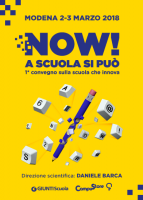You may have heard that it’s best to “ease” into hands-on project-based learning at the start of the school year. Maybe you feel your students aren’t ready, need some skills development, or just need to have a few weeks of settling down before getting started with more independent work.
Good teachers know that students learn a lot more when they get their hands on real materials, and get to do their own projects and experiments. But sometimes we get frustrated thinking about the students who won’t cooperate, don’t clean up, waste materials, or misbehave during our hands-on learning time. In my work as a science teacher and coach, I’ve seen teachers who decide to delay lab activities until behavior is rock-solid. Instead of starting off with a bang, they tiptoe toward inquiry learning.
from Teacher Magazine: Teaching Secrets: How to Maximize Hands-On Learning.
The author, Anthony Cody is an award-winning science teacher, and this article has some great ideas, tips and practical suggestions for all grades and subject areas. He goes on:
My experience is in science, but many teachers of social studies, English, math, and other subjects also have great success with hands-on, minds-on activities. I’d bet some of my colleagues in these other content areas also feel the urge to keep kids in lockdown mode until full teacher authority has been established.
I think this is a big mistake.
Here are his reasons:
- You need to lead with your best foot.
- When you introduce cool activities the first few weeks, you are setting the stage for an exciting year.
Be sure to read his full explanation and tips for getting the school year started off right with hands-on. Teaching Secrets: How to Maximize Hands-On Learning.
I’m also sure that many teachers feel that they have students who aren’t “ready” for a more independent approach to learning. However, how will they get ready if they don’t practice it? Many teachers tell me that students have to be “unschooled” out of practices like constantly expecting to be told what to do. So why not start to build those habits and expectations on day one?
That doesn’t mean that you have to start with a monumental project. Start with something small. Give the students time to explore, invent, and tinker sooner rather than wait. If it’s chaos, you can add some constraints, but don’t give up! Give them time to learn the tools you want them to get good at with smaller, more contained projects that will build their confidence and skills.
Empowering students to believe in themselves as capable of making things that matter, both in the physical and digital world, is a crucial part of learning.
So whatever you call it, making, project-based learning, hands-on, or inquiry learning – the time to start is always NOW!
 ICE 2018 – Feb 26 (Chicago) I’m part of an “All-Star” lineup of presenters who are participating in the Illinois Computing Educators conference. Instead of one keynote they are bringing back keynotes from previous years to do panels and featured presentations. It’s a bit embarrassing to call yourself an “All-Star” but that’s their term, not mine! Check out the whole list and join us!
ICE 2018 – Feb 26 (Chicago) I’m part of an “All-Star” lineup of presenters who are participating in the Illinois Computing Educators conference. Instead of one keynote they are bringing back keynotes from previous years to do panels and featured presentations. It’s a bit embarrassing to call yourself an “All-Star” but that’s their term, not mine! Check out the whole list and join us!




 In “
In “